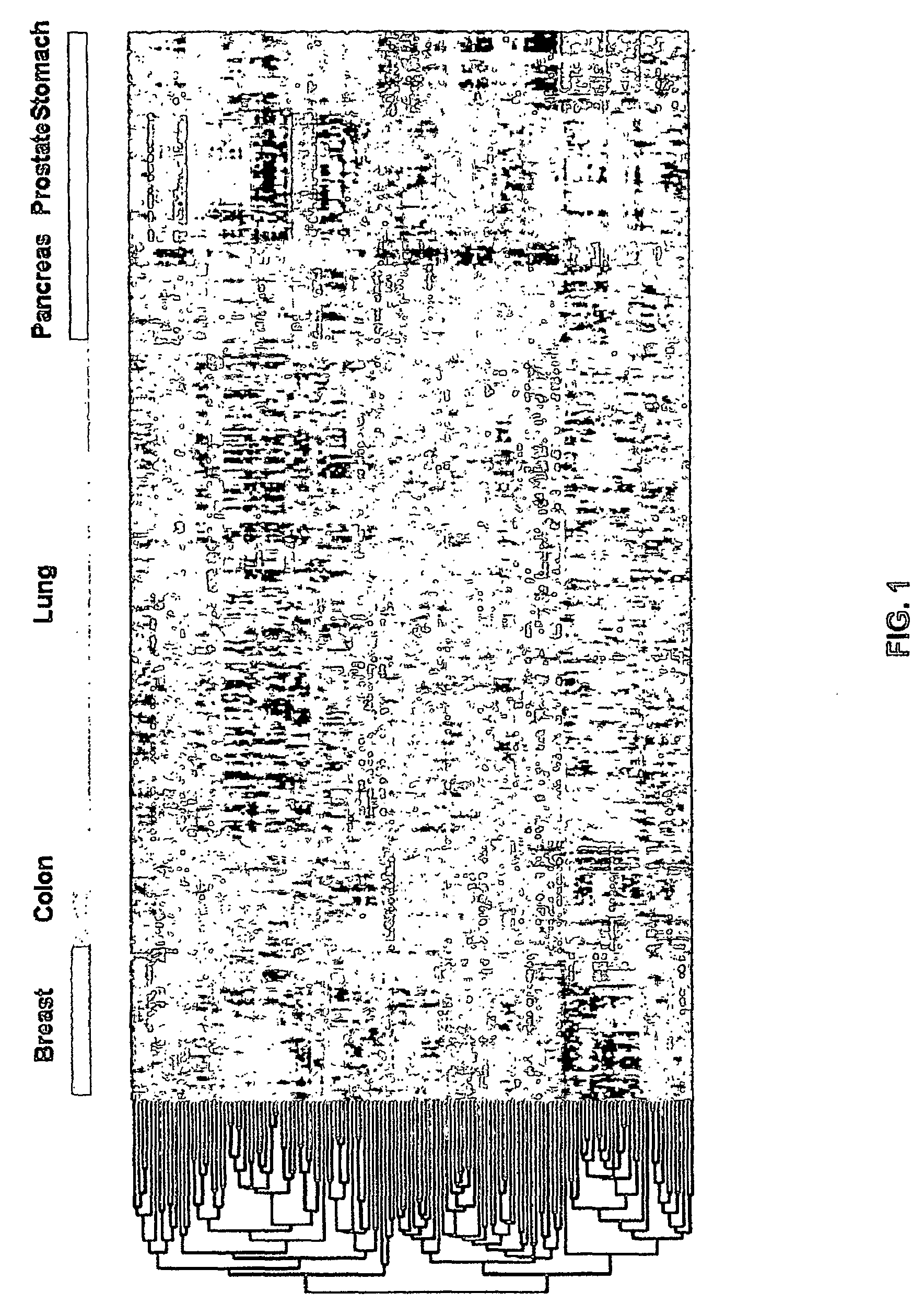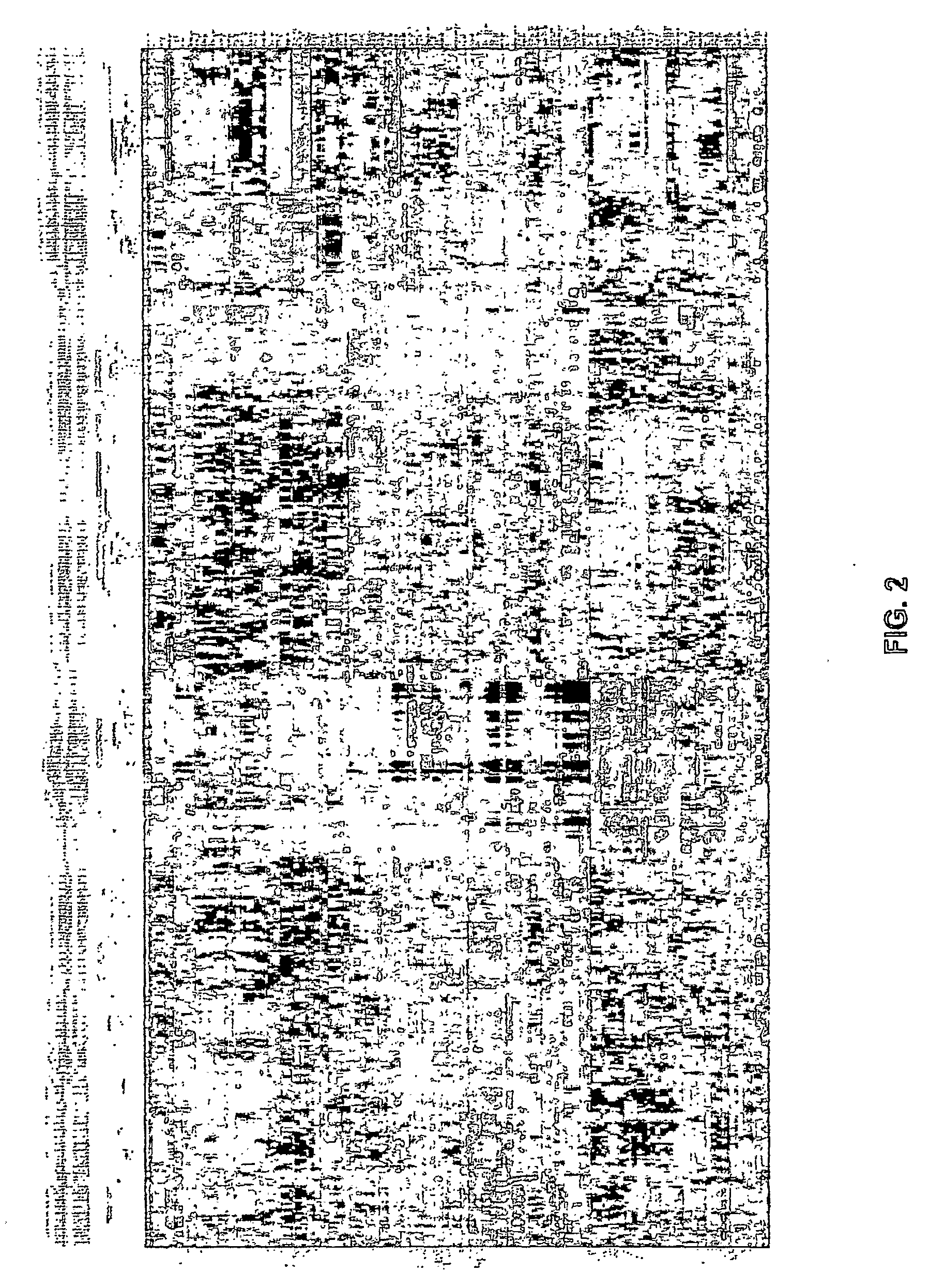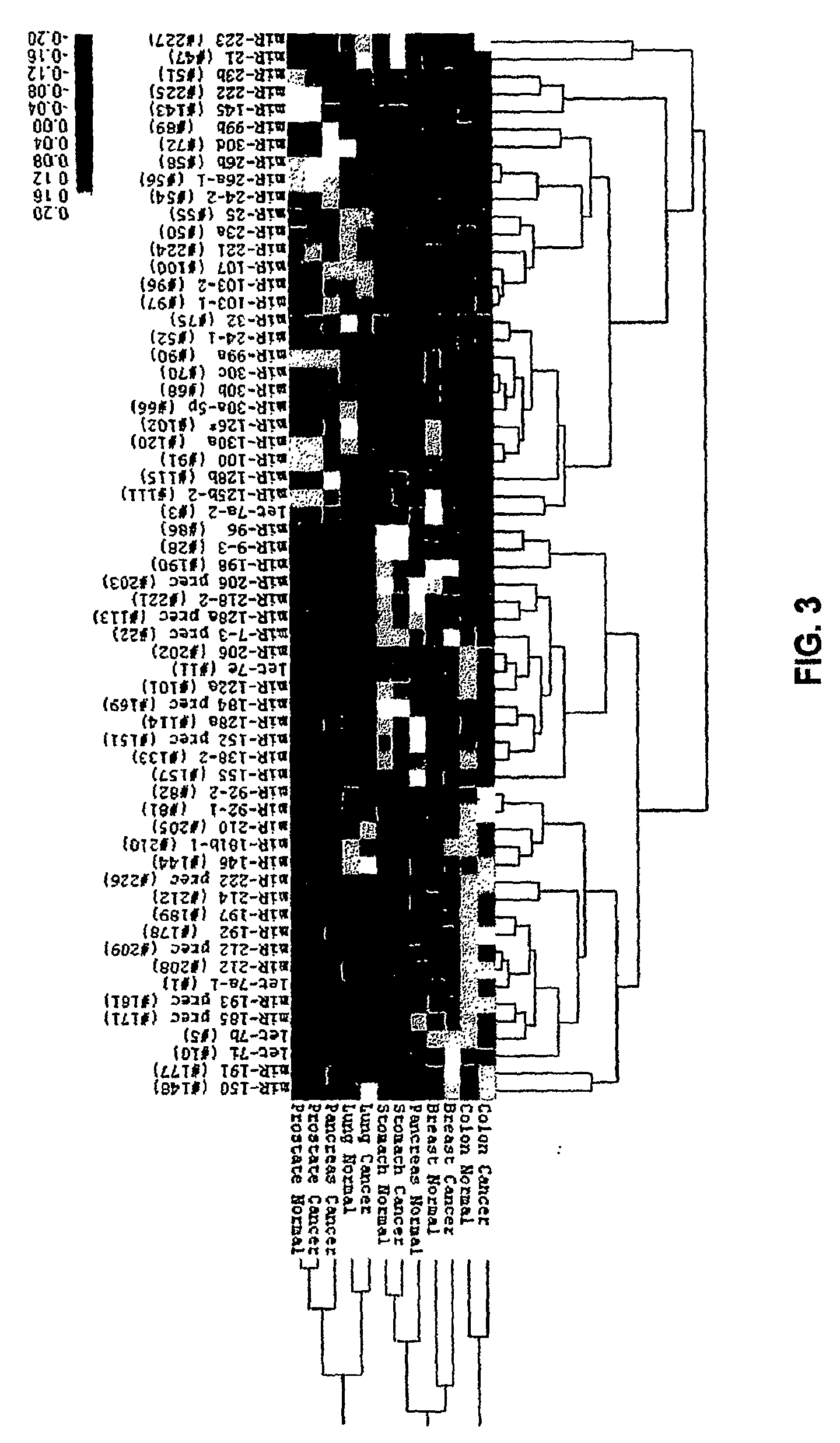MicroRna-Based Methods and Compositions for the Diagnosis, Prognosis and Treatment of Solid Cancers
a technology of microrna and solid tumors, applied in the direction of drug compositions, peptide/protein ingredients, instruments, etc., can solve the problems of low cure rate, uncontrolled growth, and low cure rate of prostate cancer, and achieve the effect of reducing expression, reducing tumorigenesis, and increasing the level of mir gene produ
- Summary
- Abstract
- Description
- Claims
- Application Information
AI Technical Summary
Benefits of technology
Problems solved by technology
Method used
Image
Examples
example 1
Identification of a MicroRNA Expression Signature in Human Solid Cancers Statistics
[0151]The combined cancers / normal tissue comparison was conducted using a reduced number of lung samples (80 cancer and 40 normal samples), in order to balance the different tissues numerically, yielding a total of 404 samples. For statistical analysis, 137 miRs, whose expression values were above 256 (threshold value) in at least 50% of the samples, were retained from the 228 that were measured. A T test was used to identify differentially-expressed microRNAs (Table 3). The p-values of the T test were corrected for multiple testing procedures and to control Type I error rates. Adjusted p-values were obtained by performing resampling with 500,000 permutations (Jung, S. H., et al. Biostatistics 6: 157-69 (2005)). This analysis was performed in order to evaluate the results by using the same method as Lu and co-workers (Lu, J., et al., Nature 435: 834-8 (2005)).
[0152]As an alternative to T test, signifi...
example 2
Identification of MicroRNA Expression Signatures Associated with Various Human Solid Cancers
Results
[0155]To identify microRNAs that are prognostic for cancer status associated with solid tumors, without incurring bias due to tissue specificity, an alternative approach was used. First, six tissue-specific signatures, one for each cancer histotype, were obtained by performing independent PAM tests (summarized in Tables 6 and 7) Specific signatures for each cancer are shown in Tables 8-13: e.g., breast-Table 8; colon—Table 9; lung—Table 10; pancreas—Table 11; prostate—Table 12; stomach—Table 13. Using these data, deregulated microRNAs that were shared among the different histotype miRNA signatures were identified (Table 14). In order to compute the p-values for this comparative analysis, a re-sampling test with 1,000,000 random permutations on the miRNA identity was performed. The p-value was defined as the relative frequency of simulation scores exceeding the real score. Twenty-one mi...
example 3
Identification of Predicted Targets for MicroRNAs that are Deregulated in Solid Tumors
Materials and Methods:
[0160]Tumor Suppressor and Oncogene Target Predictions
[0161]The most recent TargetScan predictions (April 2005) were used to identify putative microRNA targets. These include essentially the 3'UTR targets reported by Lewis et al. (Lewis, B. P., et al, Cell 120: 15-20 (2005)), with a few changes arising from updated gene boundary definitions from the April 2005 UCSC Genome Browser mapping of RefSeq mRNAs to the hg17 human genome assembly. Among the putative targets, known cancer genes (tumor suppressors and oncogenes) were specified according to their identification in the Cancer Gene Census, which is accessible at the internet site www.sanger.ac.uk / genetics / CGP / Census / , or as reported by OMIM at www.ncbi.nlm.nih.gov.
Target In Vitro Assays
[0162]For luciferase reporter experiments, 3′ UTR segments of Rb1, TGFBR2 and Plag1 that are predicted to interact with specific cancer-assoc...
PUM
| Property | Measurement | Unit |
|---|---|---|
| threshold value | aaaaa | aaaaa |
| weight | aaaaa | aaaaa |
| volume | aaaaa | aaaaa |
Abstract
Description
Claims
Application Information
 Login to View More
Login to View More - R&D
- Intellectual Property
- Life Sciences
- Materials
- Tech Scout
- Unparalleled Data Quality
- Higher Quality Content
- 60% Fewer Hallucinations
Browse by: Latest US Patents, China's latest patents, Technical Efficacy Thesaurus, Application Domain, Technology Topic, Popular Technical Reports.
© 2025 PatSnap. All rights reserved.Legal|Privacy policy|Modern Slavery Act Transparency Statement|Sitemap|About US| Contact US: help@patsnap.com



